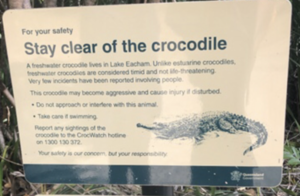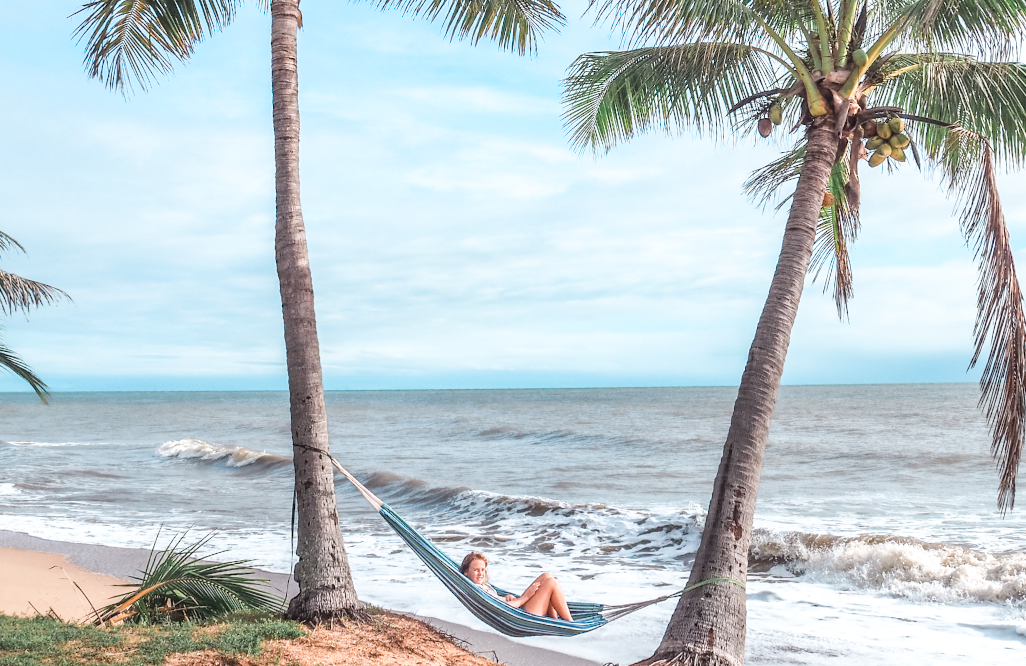Moving to Magnetic Island in North Queensland taught me a lot – going troppo in its suffocating humidity is actually a thing, fishing shirts are acceptable day-wear, and most importantly, its animals are after us.
Tourists from around the world know this and are terrified of the biting, stinging, poisonous, venom-spitting wildlife waiting to pounce on them as soon as they step foot on Aussie soil. I’ve always thought it was an exaggeration, another quirky misrepresentation we’ve manufactured to make us all look like Croc Dundee while we have a little laugh at our visitors, tell them to watch out for Drop Bears and kangaroos on Pitt St, and invite them to walk across the ditch to visit our Kiwi mates for dinner. But now I know better.
Queensland is chockers with animals that can kill us – and what’s even more scary is that some of them actually want to. They lay in wait in the ocean or leaf litter, they disguise themselves as rocks or leaves or pretty shells and wait for us to brush up against a branch or go out in a tinnie for a sunset fish.
With more than 15 marine, reptile and arachnoid killers plus a whole host of creatures that may not kill you but will really, really hurt you, there’s a lot to look out for.
Living in such a deadly state, you’d expect locals to rush you with warnings: Don’t swim there! Don’t walk there! Don’t touch that!
But no, being Queenslanders, they just shrug. They may throw you a little advice – “Hey mate, we saw a few big crocs down there yesterday, I’d give it a couple of days before you swim.” But that’s it. Nothing fazes a Queenslander.

Crocs, tiger sharks, death adders, irukandji…nothing to worry about
It’s a special place up here in Queensland. But you do need to have your wits about you. Here’s what I’ve learnt.
Saltwater crocodiles are terrifying predators because unlike sharks that usually kill us by accident, these huge crocs actually stalk us and want to eat us. Signs all along the North Queensland coast warn against swimming in the rivers or ocean, and even following a daily routine when you’re camping can be fatal because crocs will watch you and plan their attack.
They’ve dragged people from tents at Cape Tribulation, launched themselves from the riverside at boats in Townsville, and only a few months ago an empty tinnie was found floating off Hinchinbrook Island – the agreed fate of the fisherman is that a croc probably knocked him from the boat and ate him.
We even swam with a freshwater croc in the Atherton Tablelands. Unknowingly of course. We saw this sign after our dip. Queenslanders are offended that we found it scary.”They’re more scared of you!” they say.

It’s so hot up here though, you’d think that when you found the perfect croc and shark-free beach you’d be able to jump in and escape the wet seasons’ 90% humidity. Think again! Between November and May – when North Queensland is a steamy, humid bowl of sweat – tiny deadly Irukandji lurk in the warm, tropical water and fire stingers from the tips of their metre-long tentacles at anyone who gets too close. They may be smaller than a match-head but if they sting you it’s straight to hospital and Intensive Care.
The giant box jellyfish is another summer stalker. We saw one just off the beach, with a head the size of a beach ball and tentacles trailing beautifully and poisonously for metres behind it. That’s why protective stinger suits are worn up here over summer. But make sure they’re full body – any uncovered part like your face or fingers is at risk of being stung.
Wear reef shoes too, because you don’t want to step on a deadly stonefish. Don’t touch the pretty blue octopus you may see in rock pools as they’re highly venomous, and never pick up beautiful cone shaped shells because the snails that live inside shoot poisonous harpoons that – surprise – can also kill you.
If you decide the ocean is too risky and plan to spend summer hiking, make sure to check your body for paralysis ticks and keep an eye out for Queensland’s six deadly snakes. Death Adders love hiding in leaf litter and if you’re bitten, you have around six hours before total paralysis and death. Red belly black snakes love the sun and water, and tiger snakes are huge and aggressive. We saw one of these on the road out of Carnarvon Gorge and it was terrifyingly enormous. I sped past it, hoping it didn’t somehow grab onto the car and slither inside.

Don’t go in the water! And don’t linger too long on the beach
Even gardening can be hazardous up here – if the snakes don’t get you the caterpillars will. Queensland has electric (hairy) caterpillars with fine hairs that attach into your skin causing a burning pain, swelling, and big red wheals that peel off over time, and if you run over one with the mower you have to hold your breath and run from the hair that can get into your lungs and hinder your breathing.
On the positive side, as locals will tell you there’s not much else to worry about up here in Queensland, and if you are careful you’ll be fine.
Just let someone else jump into the river first.

